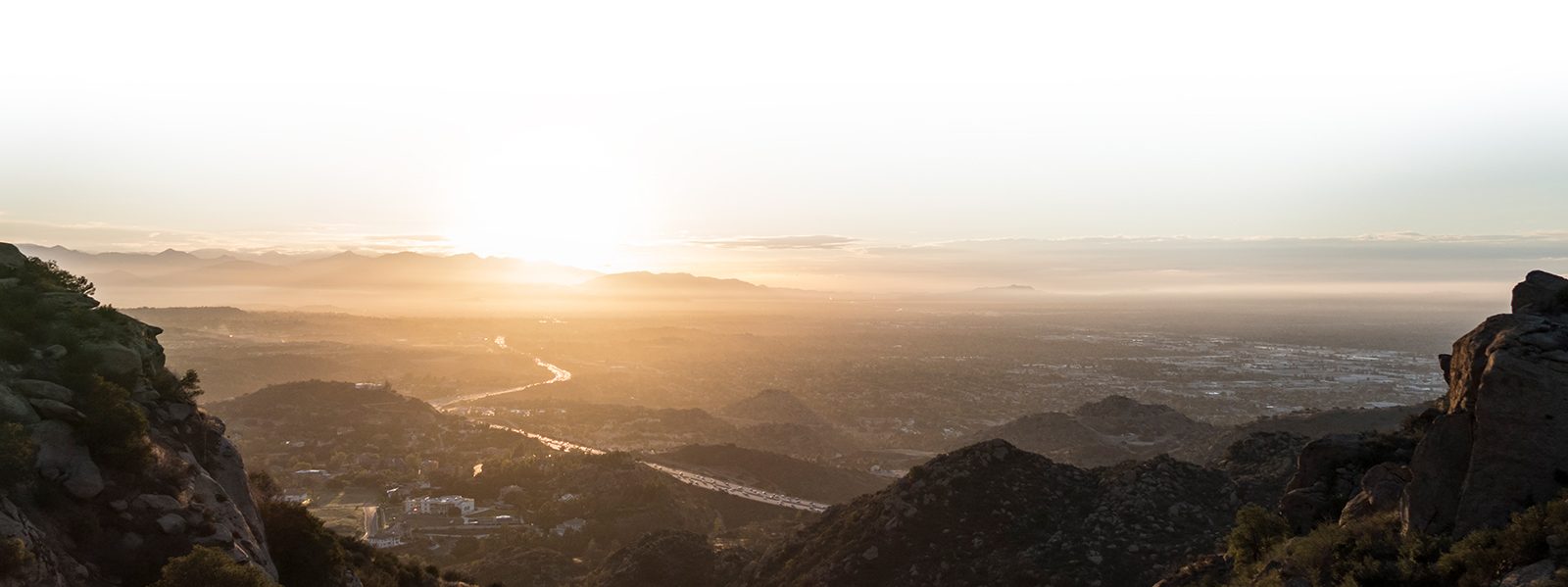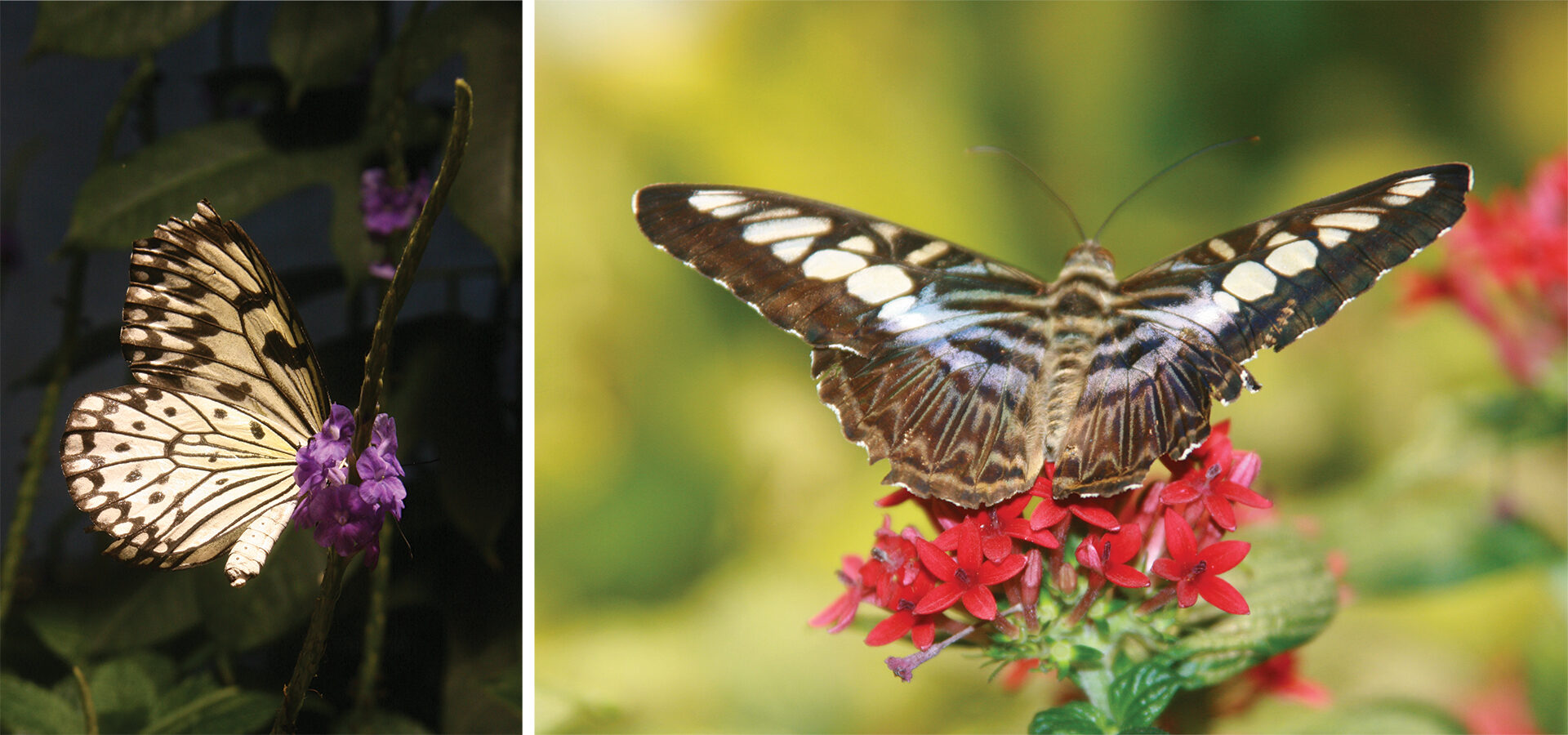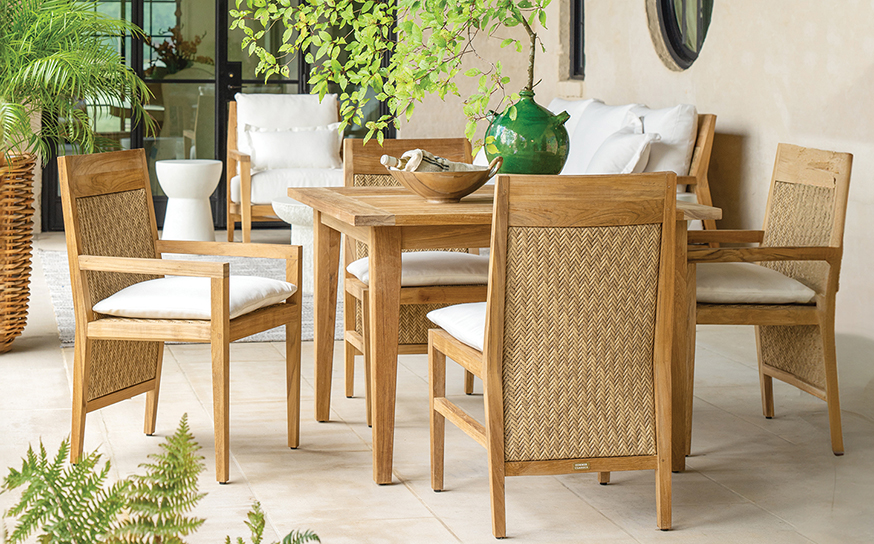How to Create a Butterfly Garden with Native Plants
Fluttering feast.
-
CategoryHomes
-
Written byDakota Kim
Few sights are more idyllic than watching butterflies alight on a flower patch, happily drinking nectar. But attracting these important pollinators to your garden can be challenging. Erin Johnson, director of public programs at Theodore Payne Foundation, says one key is to use plants that create a butterfly-friendly habitat and arrange them properly
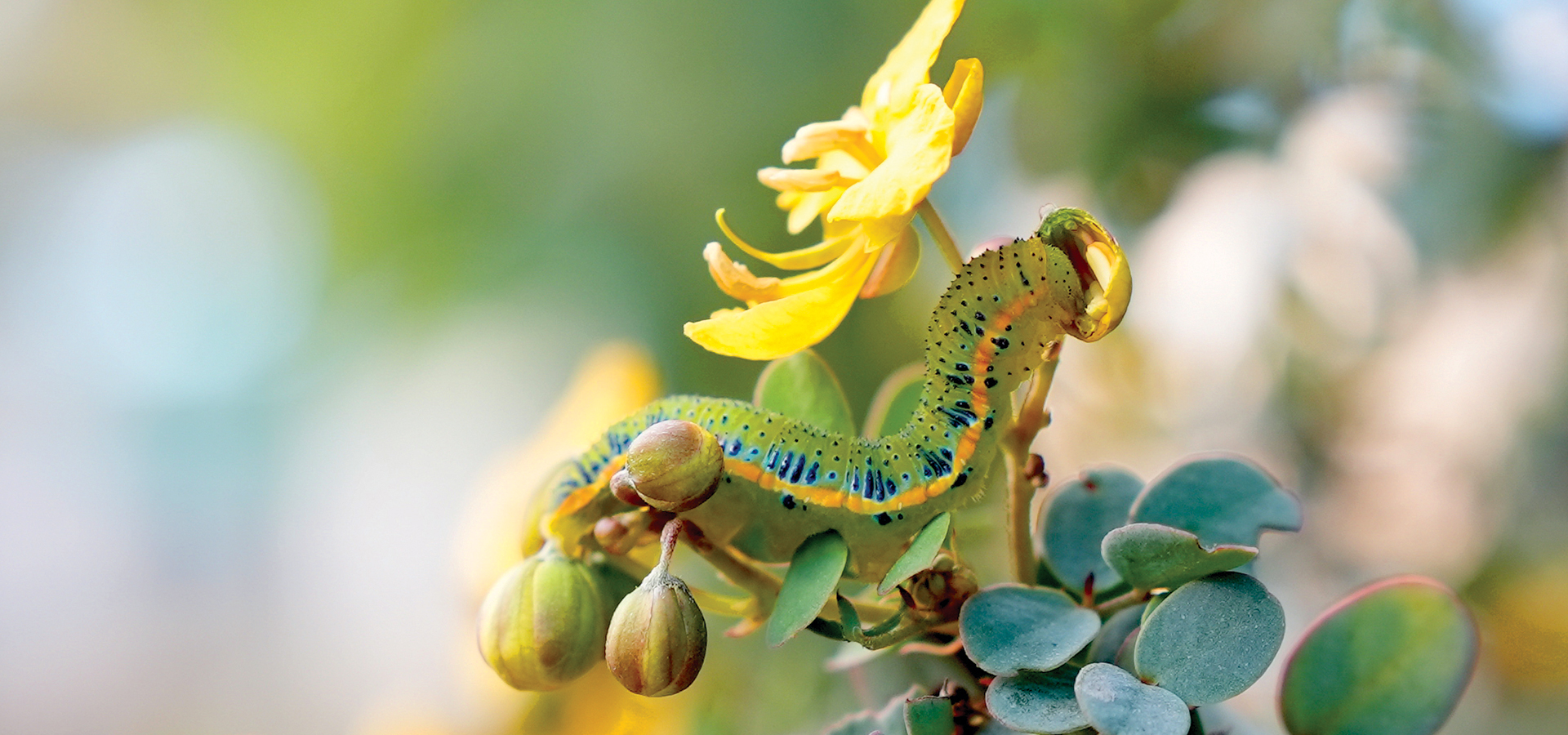
Above: Cloudless sulphur caterpillar
•••
First thing to do, Erin says, is sketch out a simple plan, grouping wildflowers together and varying the height of your flora. Butterflies like to harvest nectar quickly and easily, so plant your seeds or starts in 3-by-3-foot blocks. Rather than buying a wildflower seed mix, select, say, native California poppies for one patch and California fuchsia for another.
“It’s not a deal breaker if you have other aesthetic goals, but grouping your flowers is going to make it much easier and more attractive for pollinators to visit your site,” Erin shares.
Secondly, cultivate a variety of different heights. This allows a variety of sheltering spaces where butterflies can take cover. Include small plants like wildflowers, medium-sized shrubs like native sage, small trees like desert willows, and larger ones like coast live oak. Importantly, plan for various nectar-offering blooms throughout the year, since different butterflies migrate in different seasons.
Provide sunny areas where butterflies can bask in the light and set out a puddling dish where they can receive salts and minerals that they can’t get from plants. That can be as simple as a dish or saucer filled with wet sand and soil.
Lastly, consider letting your trees’ leaves form a blanket on the ground for our majestic western monarchs, because they, along with other moths and butterflies, conduct their vital chrysalis stage in the leaf litter below your trees.
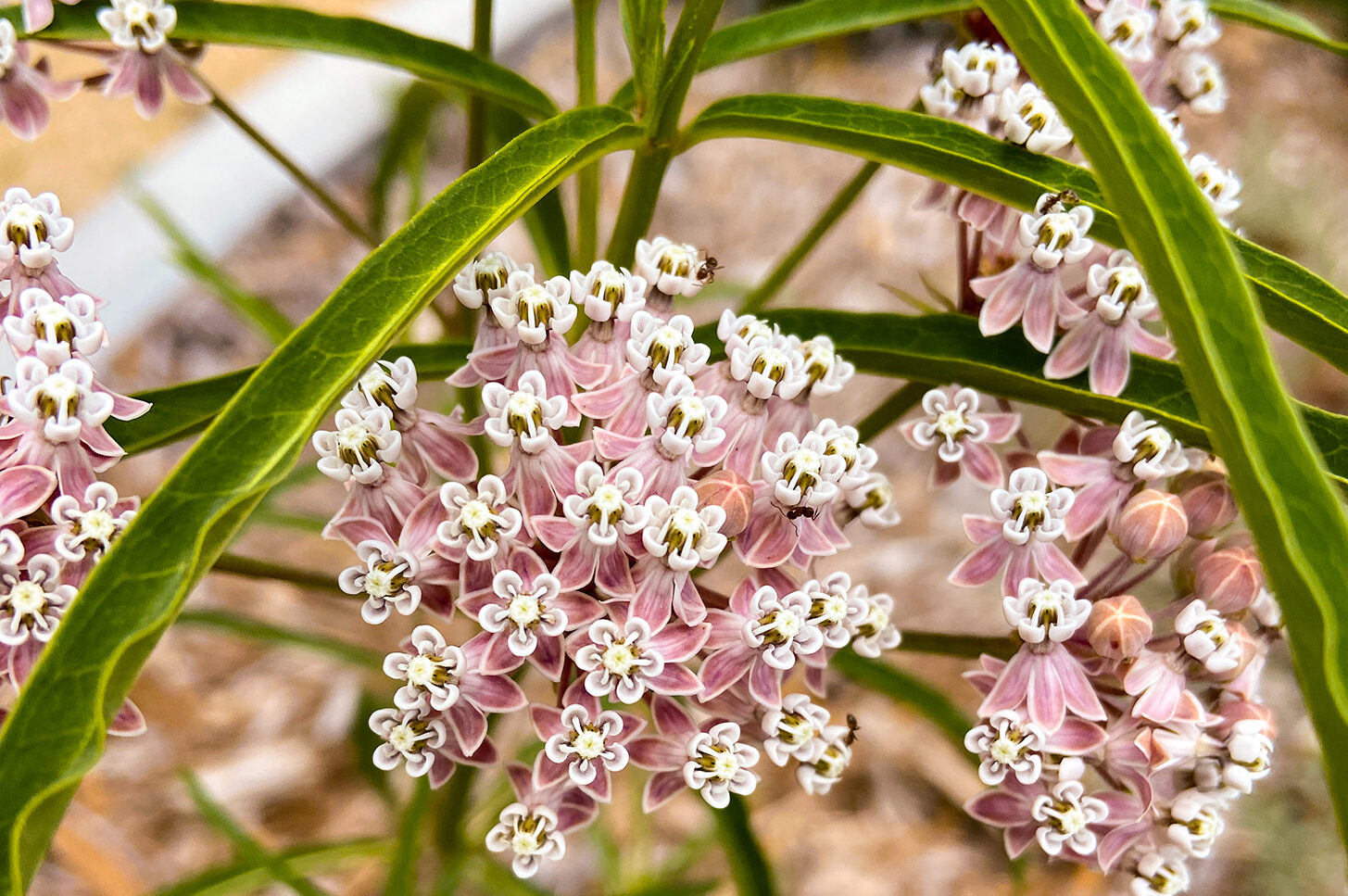
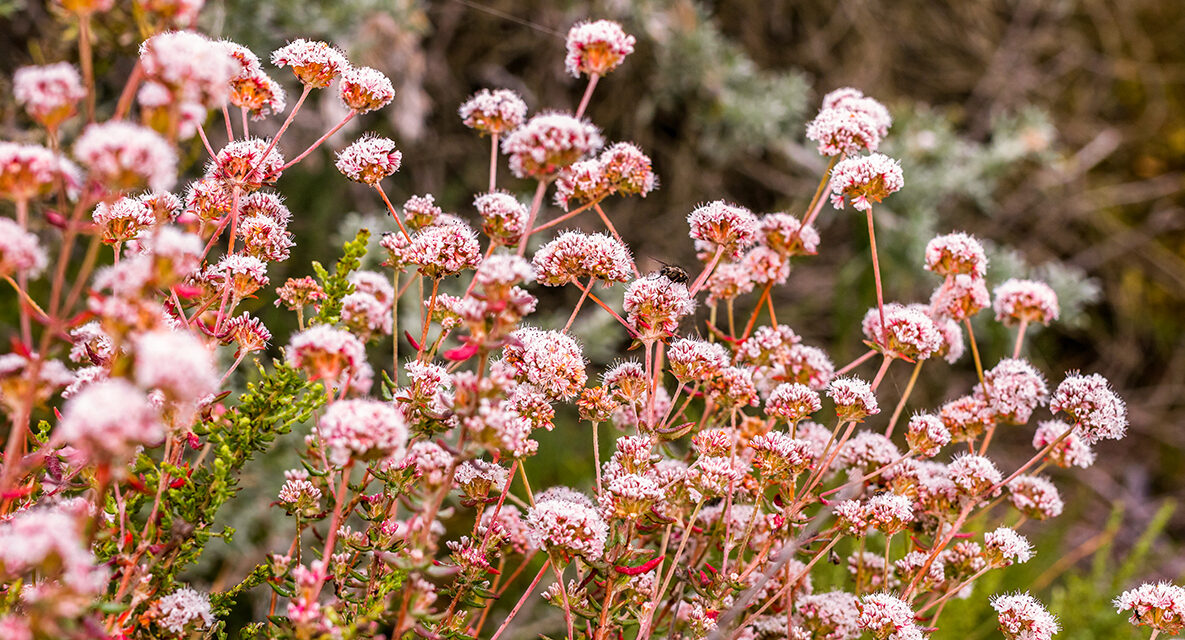
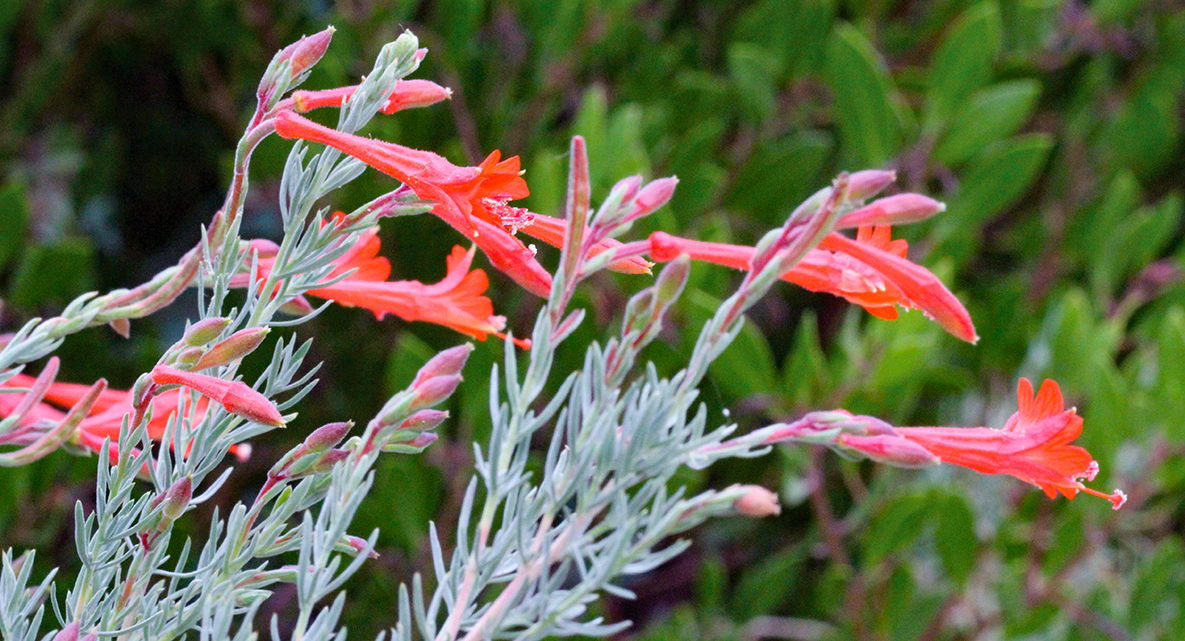
Above: Manzanita (large image), California buckwheat, California fuchsia (green background)
•••
BUTTERFLIES CAN’T RESIST THESE 5 NATIVES
Milkweed. Milkweed is the only food source for monarch caterpillars. Avoid tropical milkweed and go for kotolo, narrow leaf, or showy varieties. “If you go to Home Depot, you’ll likely find a tropical milkweed that is harmful to western monarchs because it stays evergreen all year, failing to offer them the cue to complete their migration to the coast, where they overwinter,” Erin says. Because native milkweed loses leaves and looks scraggly in winter, she suggests tucking milkweed behind prettier plants and shrubs like native sage.
Baja California Senna. Butterflies love this small shrub, which is a host plant for the cloudless sulphur butterfly. The small yellow butterfly is drawn to this hearty shrub’s small, fragrant yellow blossoms and dark green leaves outlined in purple. Growing to 4 by 4 feet, it flowers from March to November. Low water requirement, and seeds can be planted in the ground or in pots.
California Fuchsia. This easy-to-grow beauty blooms with vibrant red trumpet-shaped blooms throughout summer and fall. It attracts sphinx moths and hummingbirds and provides erosion control for your garden. Fairly low-maintenance, reseeds easily and tolerates heavy soils. Cut it back once a year after it blooms, usually in December.
Manzanita. Manzanita, which translates to “little apple,” is known for its prominent reddish bark. Plant this shrub with white or pink flowers for winter blooms, keeping pollinators in your garden year-round. Blooms from January to April, and is a perfect midsize shrub for both coastal and inland gardens. Low-maintenance and very drought-tolerant.
California Buckwheat. This 4-foot shrub attracts many pollinators including hairstreak and blue butterflies. It also provides erosion control and grows well on the coast and inland. This keystone species for sagebrush scrub ecosystems provides butterflies with flowers (comes in several colors) from June to October, and petals persist even in the dead of summer. Get a variety that grows low and wide to use as ground cover.
Architect May Sung Comes to The Rescue on a Studio City Reno Gone Wild
In the right hands…finally!
Join the Valley Community
